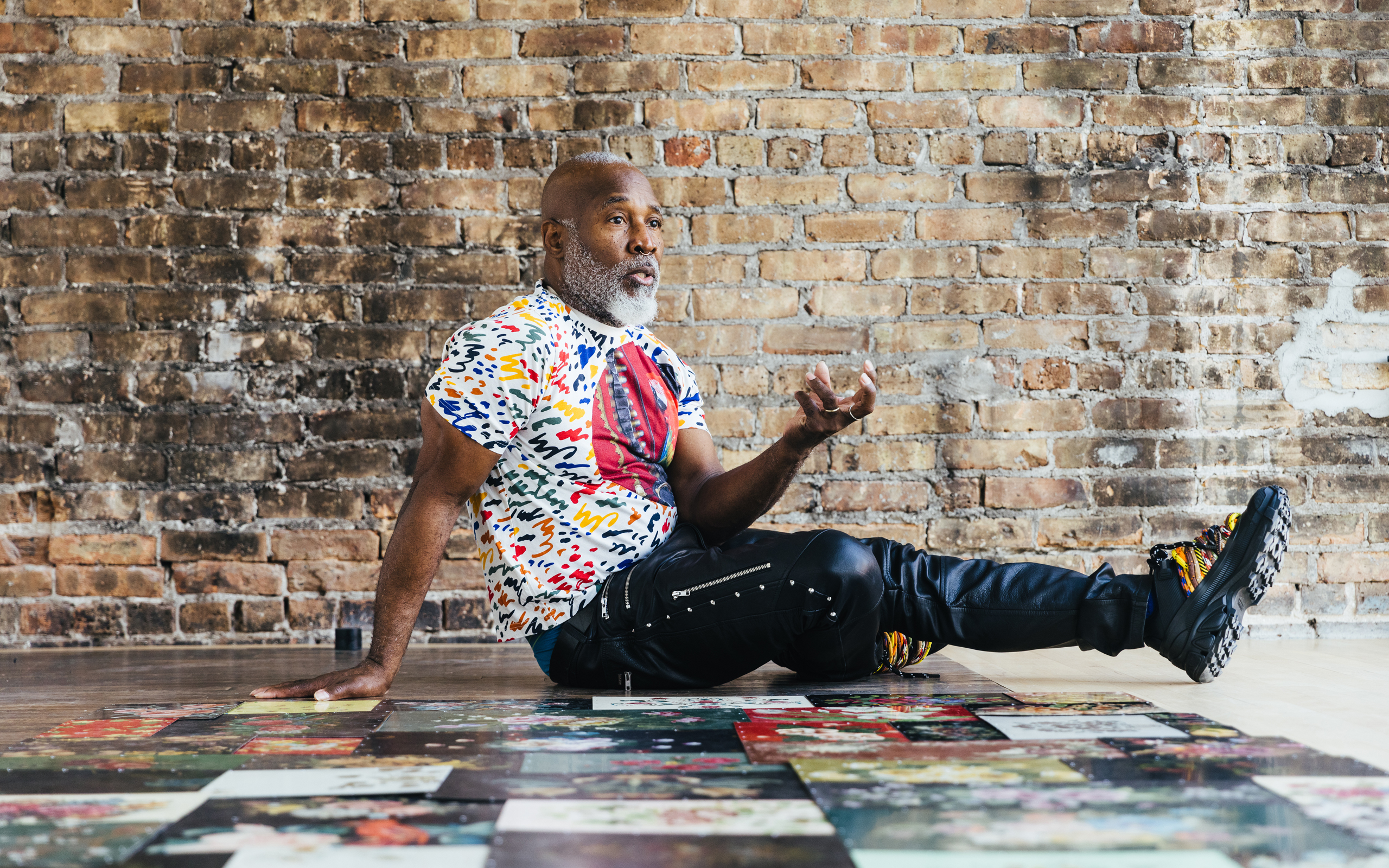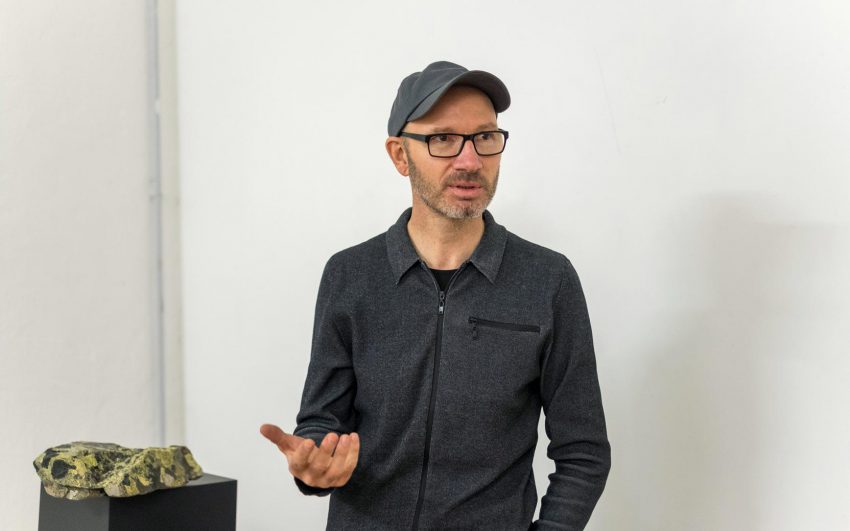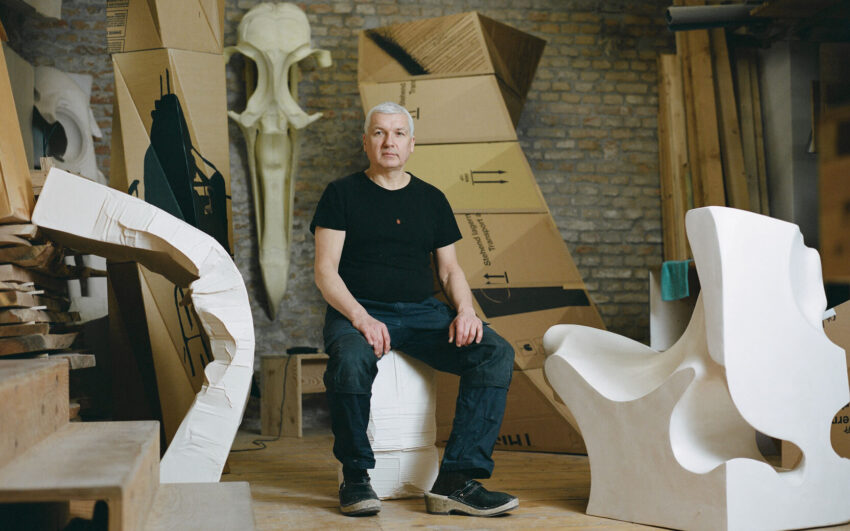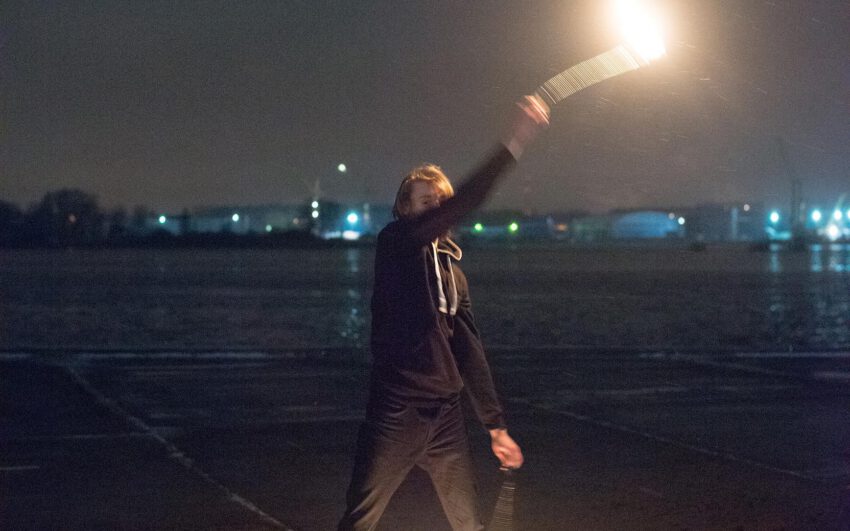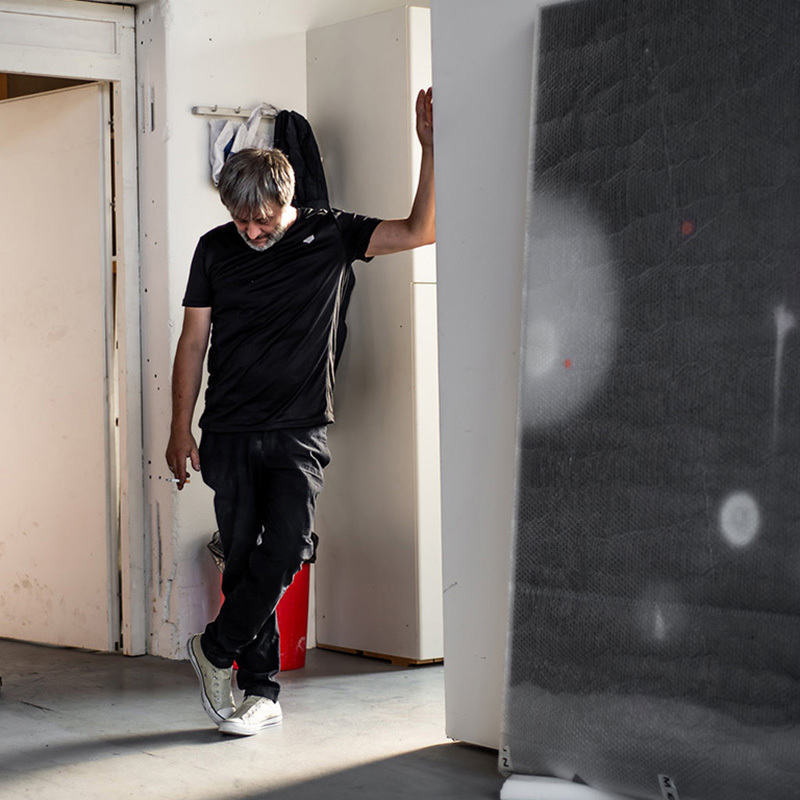From his head-turning sculptures to dance performances, Nick Cave uses whatever medium he considers fit to address the violence visited on the Black community in a present-day America troubled by police brutality. He weaves into the darkness touches of hope, acknowledging the joys to be found in queer culture and Black excellence. In the process, his inquiries into bodies and otherness have taken him closer to himself.
Nick, you have been described as an uncategorizable artist. How do you see this epithet for you?
I think that’s perfect. I feel that it’s important as an artist that we must continue to grow and move ourselves forward. I have a lot more to say. As the world is evolving, we are evolving. We are emotionally affected by what’s going on in the world. For me it’s always been about tapping into what’s the medium that supports the idea. If I need to work in clay, I will work in clay, not that I think the most important thing is in the essence. If my work is transferred over to a new medium no matter if it’s clay, wood, metal, fiber or a dance performance it should still read ‘Nick Cave’.
What’s the medium that you are working with right now?
I’m closing the chapter on a swathe of work and asking myself: What next? Opening up to other aspects of my identity, I’m looking at aspects of queerness and thinking about bringing that forward in my work. It’s always been there, but it’s not been in the foreground. I’m thinking about that and regarding medium and material… Everything is turning itself on its head.
When you say that you have this period behind you, it doesn’t mean that you’re taking time off?
I don’t think it’s about taking time off, as opposed to giving ourselves time to become quiet and think about what has occurred during three decades of art making. The question of what comes next is the most provoking. I’m in this interesting place right now where I’m thinking, preparing and writing, but do I know what that is going to look like in terms of a form or an object? No, but I’m gathering resources and testing things and seeing what feels right.
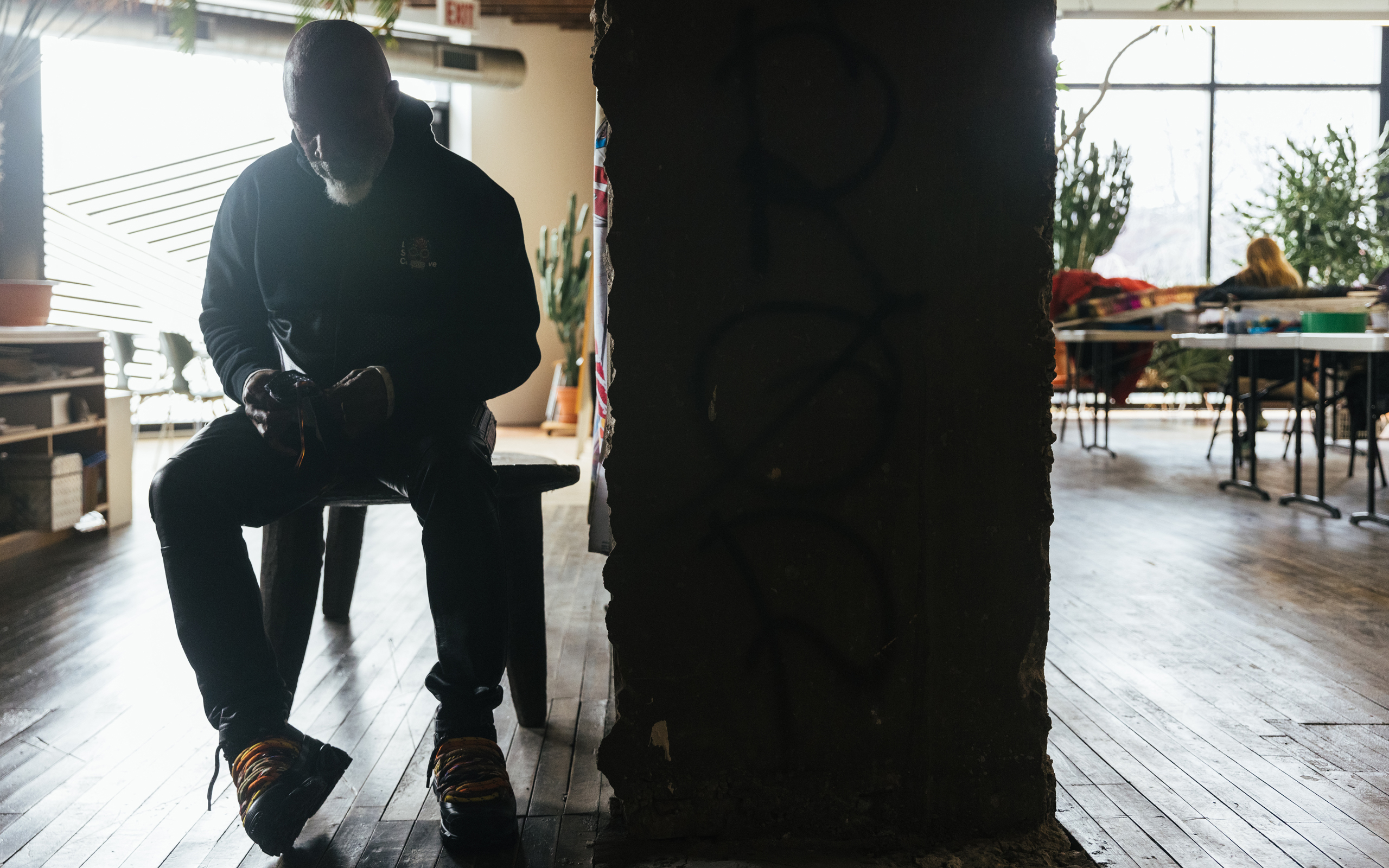
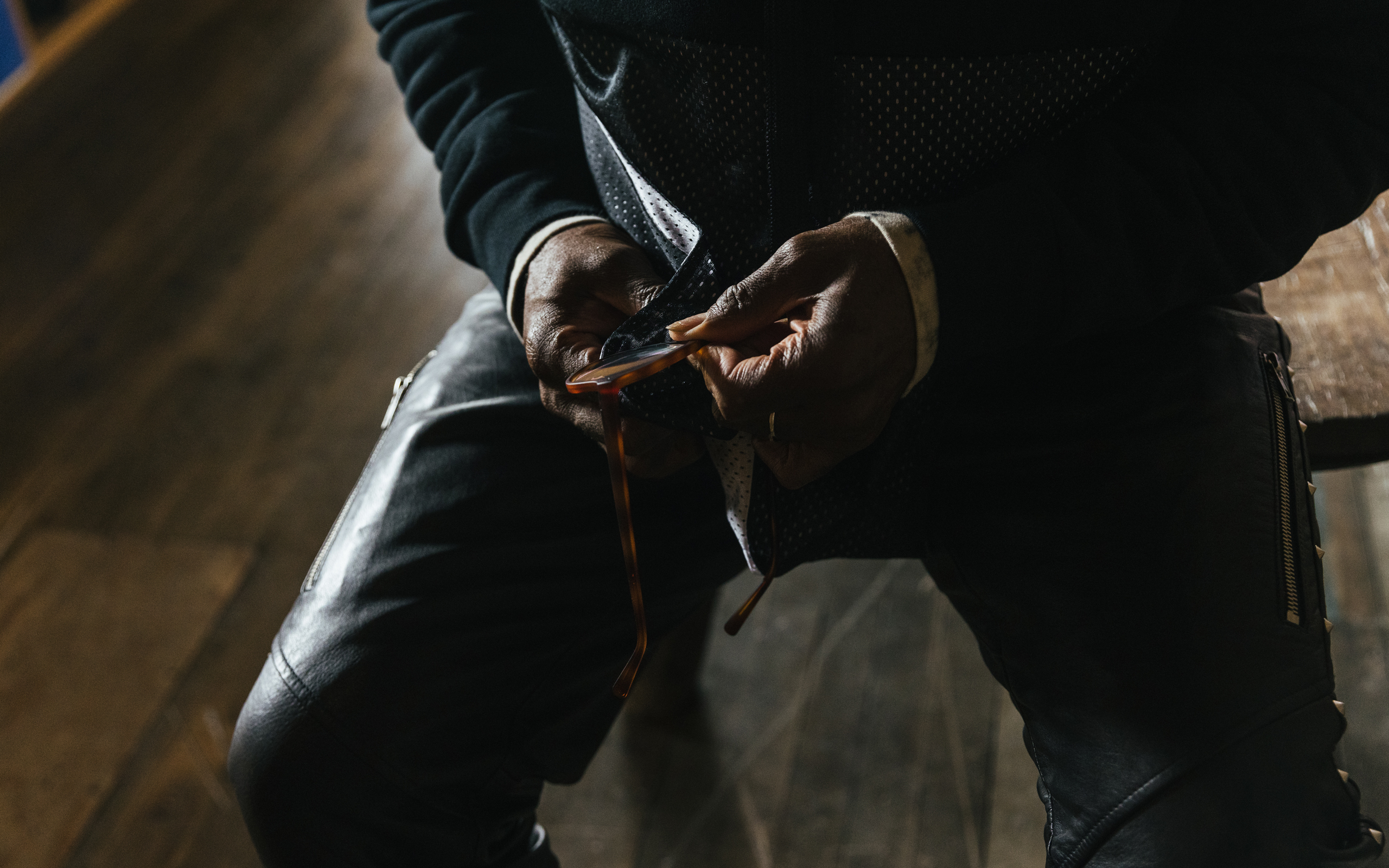
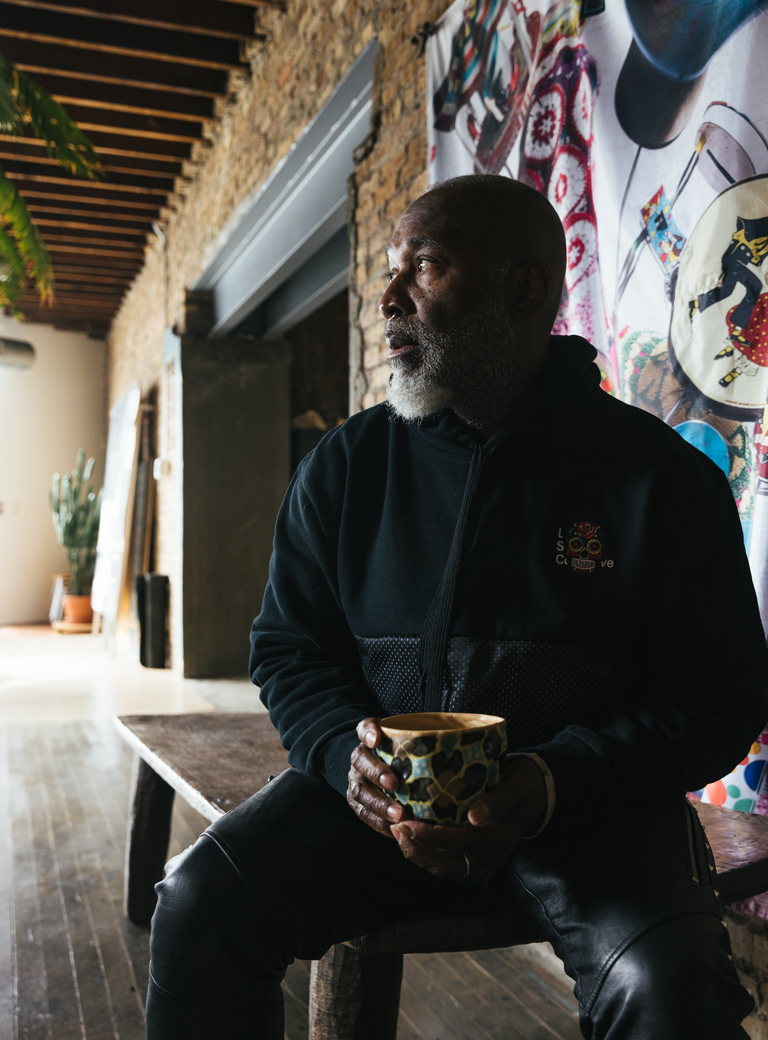
Forothermore, exhibited at the MCA in your home city of Chicago and in the spring of 2023 at the Solomon R. Guggenheim Museum in New York City, is a survey of the past three decades. Does it mark a new beginning for your practice?
It’s a moment of reflection for me to have that time to go back into this exhibition and to say that for the last three decades, I’ve been trying to bring to light the subject of racism and inequality. It’s not that I won’t continue with that advocacy but I’m going to shift what I want the focus to be on, and that advocacy will be applied to new work when necessary.
What does Chicago mean to you and your art?
Chicago has a very vibrant art scene. I’m working with four fabricators here from woodworking to bronze to dance. The city has always been a testing ground for me in addition to premiering a new project. I like that it provides me all of that. I like the fact that I can step out of it all and be in isolation. Until I am ready to land a project, I’m not running around to galleries and openings because I need to conserve as much of my energy as I possibly can.
Soundsuits, one of your grand projects, has been described as the defining moment of your early career. Do you agree with that assessment?
Well, that’s what somebody wrote… In that sense, the new work that’s happening in the studio and that I’m excited about is going to be another defining moment. I have a vision of what it is going to look like, and I have a feeling of what it’s going to feel like.
I guess the characterization is based on how Soundsuits has been so ubiquitous in your artistry. How has Soundsuits guided your career since the early 1990’s?
What is so interesting to me is that it’s still a part of the conversation when I’ve done sculpture, performance, installations, too. I think what’s happening is that I’m taking the essence of Soundsuits into a new direction. With the state of affairs, I’m interested in the body as an entry point into the work, may it be through bronze or a Soundsuit or the work that's coming up. It’s about empowering the body through dress with ideas of protection and shielding. Going forward, all of that is still very much there. There’s still this sort of element of discomfort or something “other” that is present. How do we accept something other? How do we create that space of inclusion in a way in which one may be working or creating?
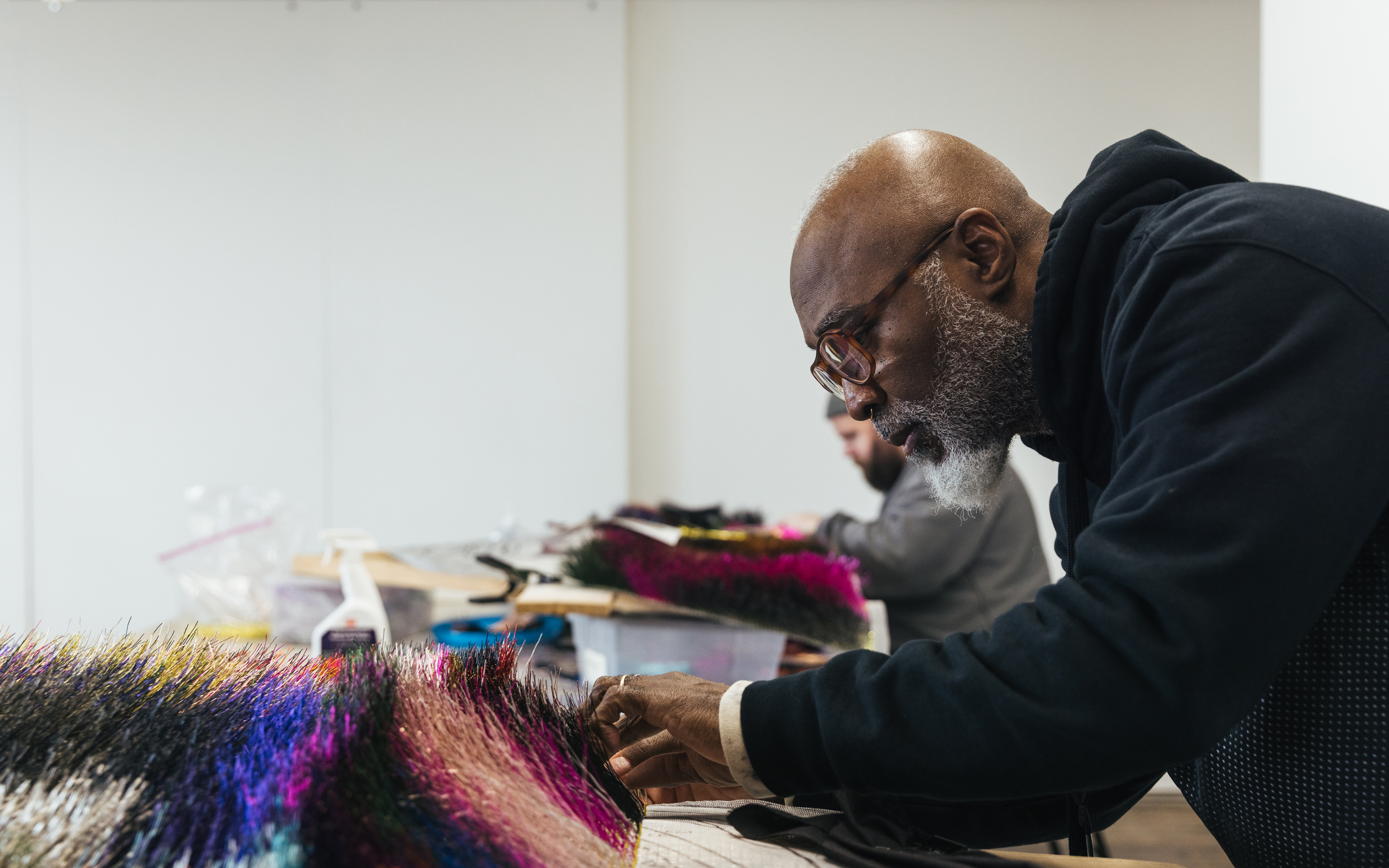
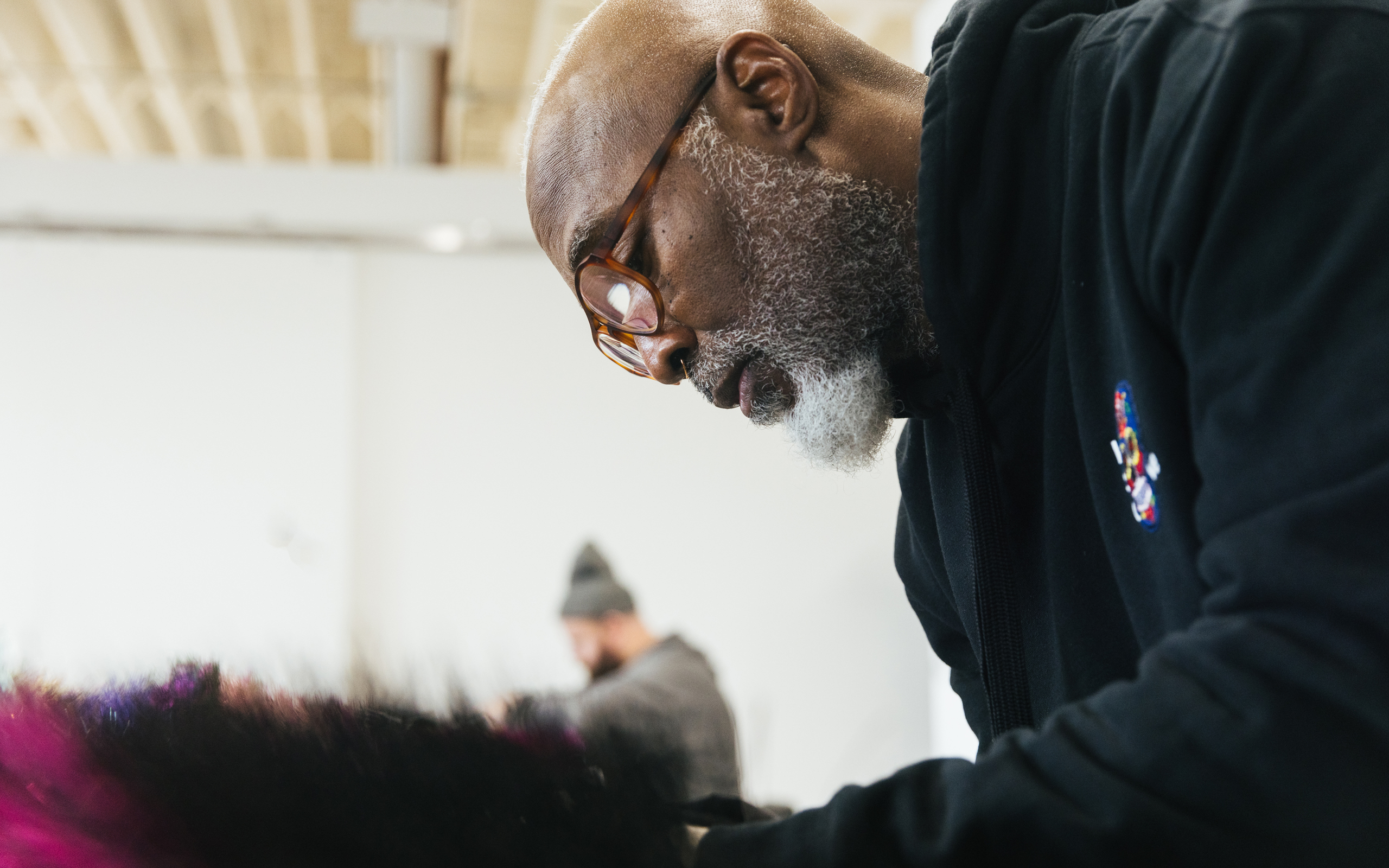
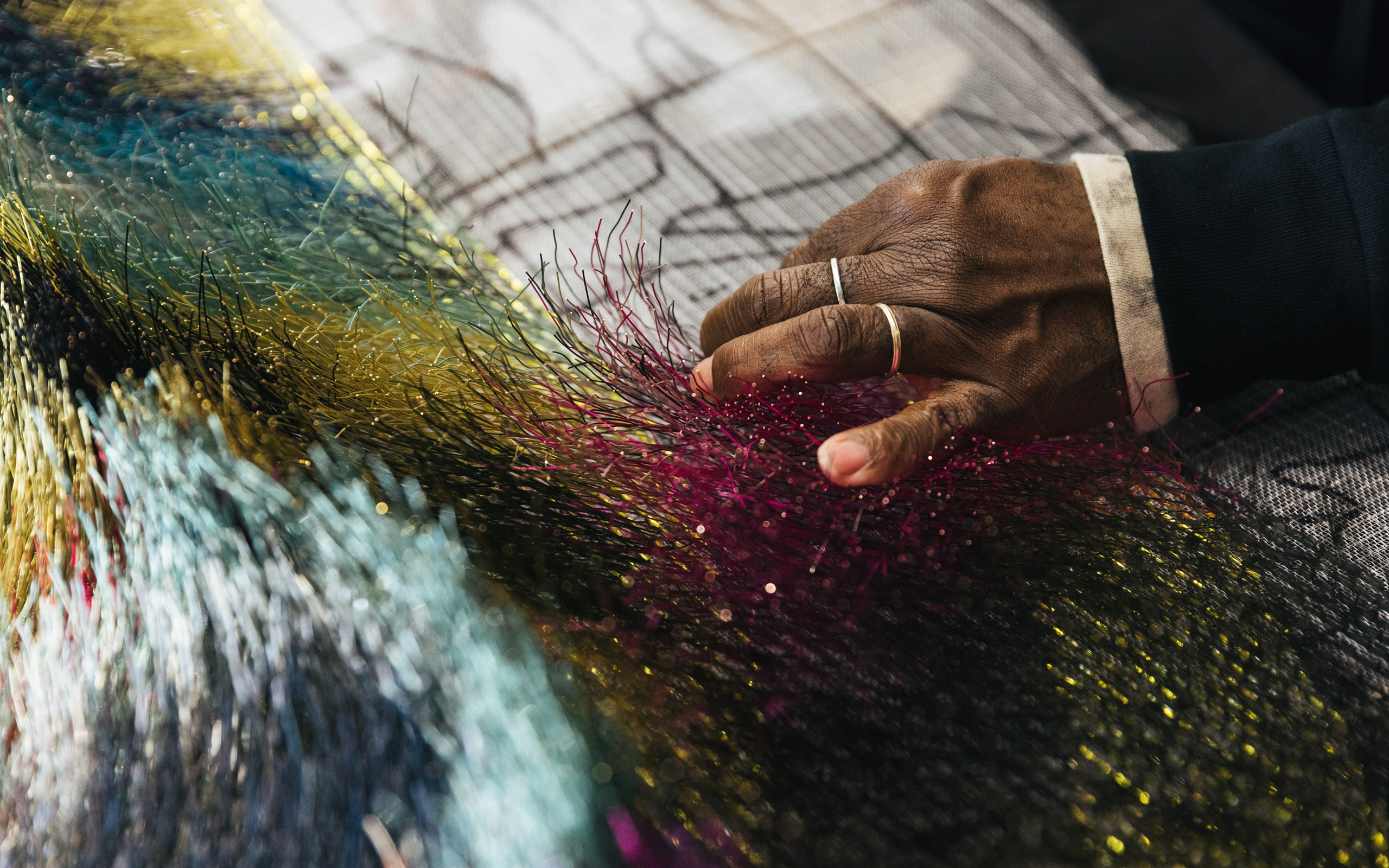
Addressing racism has been at the core of your practice, but you have expressed ideas of turning your discourse towards Black excellence. What are your thoughts on this?
My work has been dictated by societal concerns, but I’m sort of reclaiming what that means to me. What I’m interested in is what Black excellence looks like from my perspective? That’s where this sort of space of queerness is; the whole ballroom scene and being opulent in that kind of space that speaks about futurism.
What you’re describing sounds joyful, and you are said to be balancing despair and darkness with joy. Does your art have a dark stream flowing through, with joy and beauty surfacing as well?
Ultimately, we’re all drawn to fear in a seductive way. Our curiosity gets our blood flowing and gets our angst up. I’m interested in a state of discomfort confronting this kind of seductive space through adornments and other forms of presentation. I’m interested in the idea of what we do behind closed doors. In the secrecy of our own privacy, we explore identity in all sorts of ways. We all are always exercising how we see ourselves when we look in the mirror. Those moments bring confidence, self-awareness and empowerment. I’m interested in all of that but not in a vulgar way, but in a way that brings Black beauty to the fore.
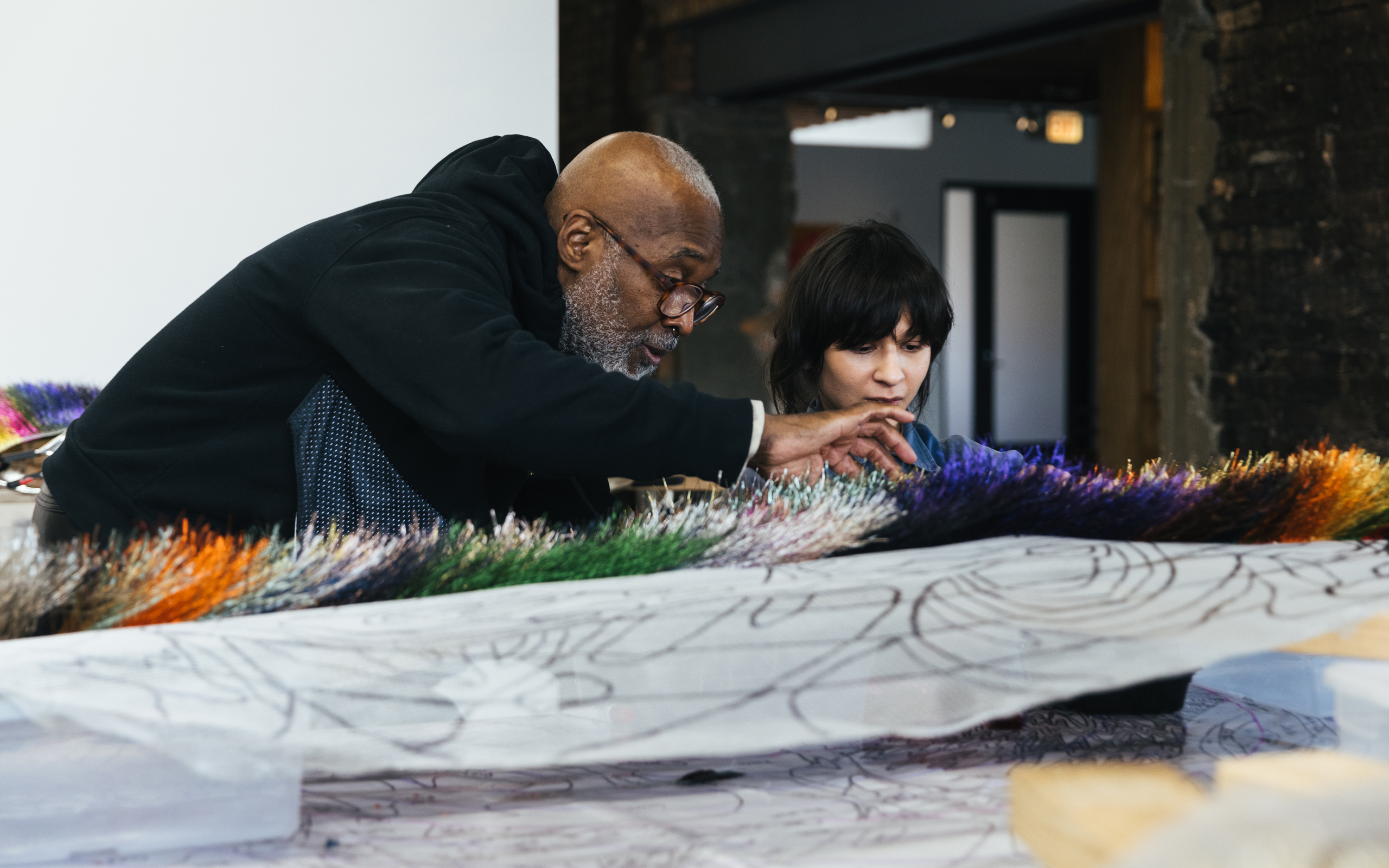
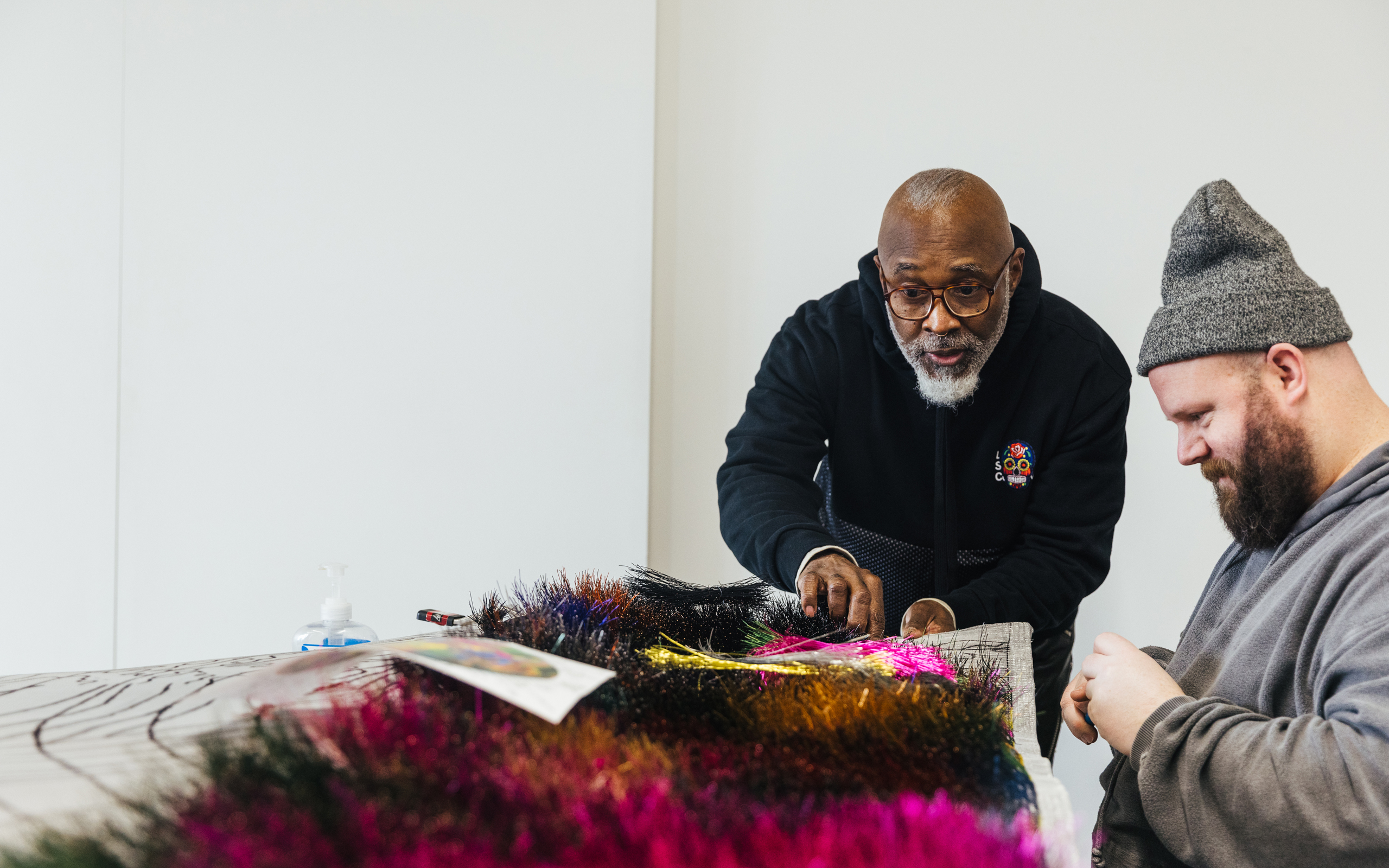
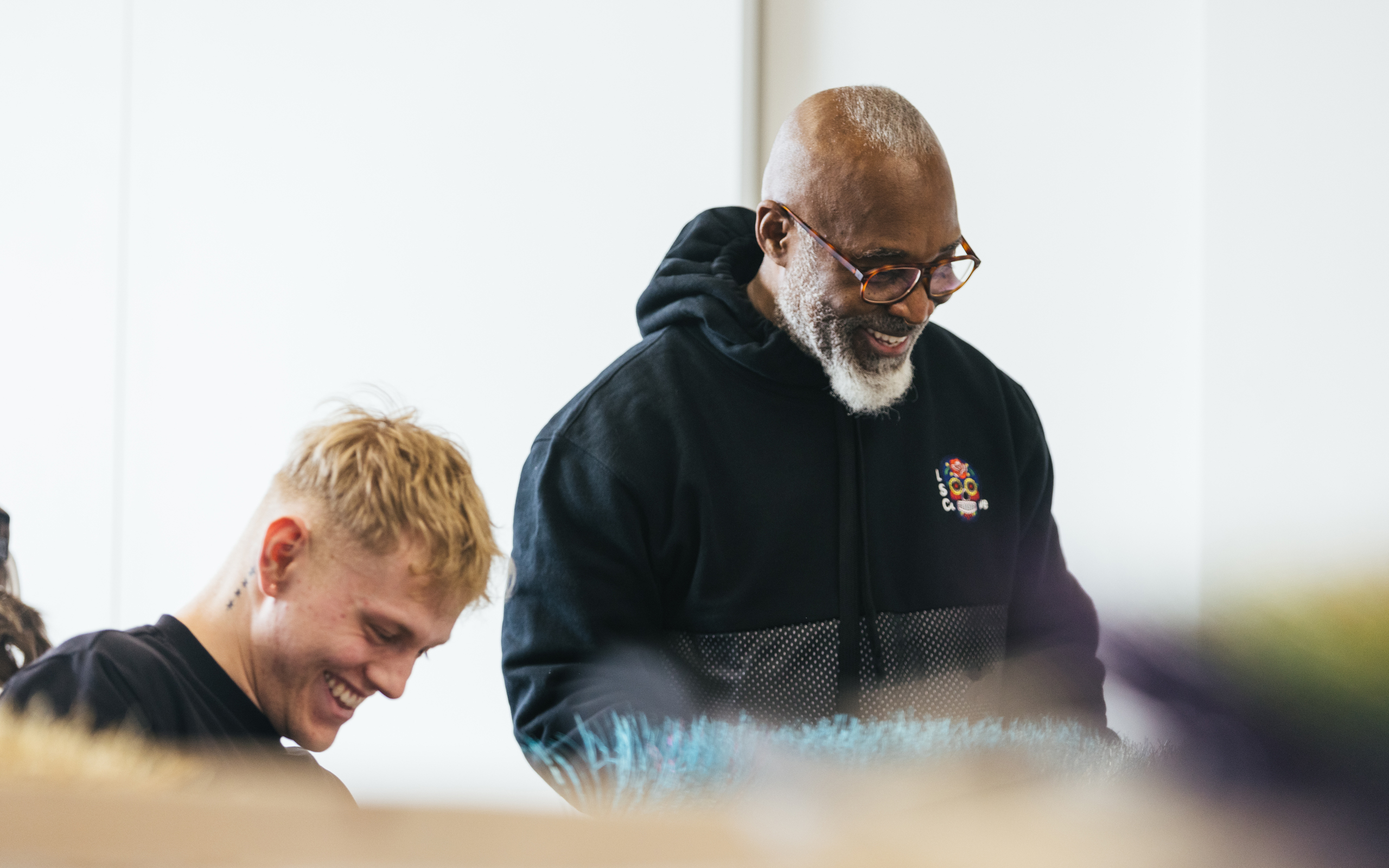
How would you describe your typical day in the studio?
I naturally wake up at 5.30 and do a light weight stretch regimen. A quiet sort of sound allows me to settle two hours before the assistants come into the studio. The studio is divided into two spaces, with assistants on one side and me on the other side. When they arrive at 9, we start the day. I would have assessed the studio the night before to decide if there was anything that needed to be prepared. I’m that zero-stress artist. I know what our five-year plan is, so I will work backward towards it. During the day, I may be out at a fabricator studio. And I have always a notepad in my back pocket in case an idea pops up. My day ends with me sitting for one hour in silence. It’s just important to be quiet. It’s important for us all to be quiet.
One thing that is striking about your art is the attention to detail and, simply, the vastness of objects you repurpose. How do you find them all?
I will jump on a plane and go to Washington state with a one-way ticket, and we will rent a cargo van for the stuff to be taken all the way back to Chicago. If I’m overseas and I happen to go into an antique mall or a flea market and I see something, I’ll ship that stuff back in a second.
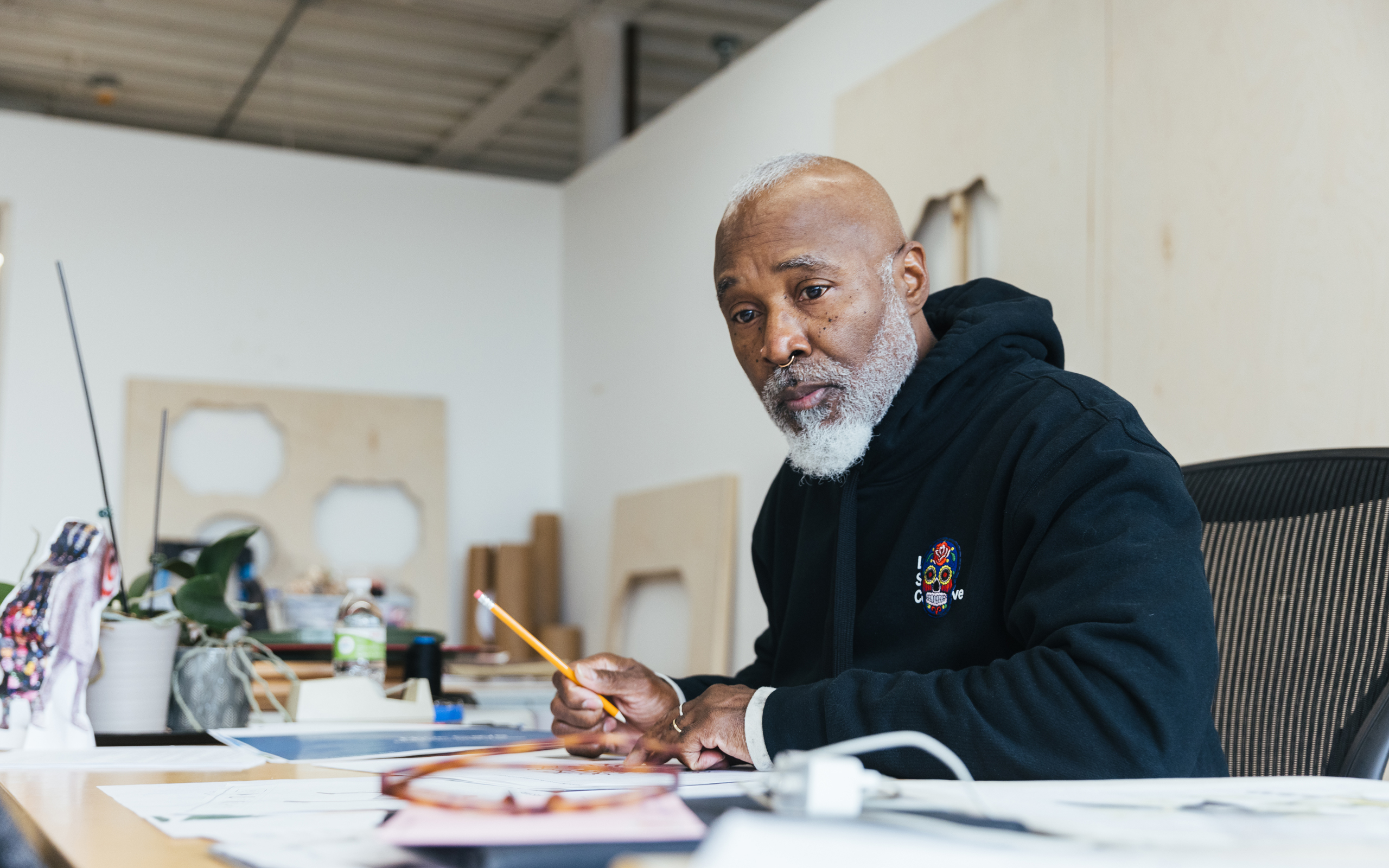
Apart from the assistants, you also work with your brother, Jack Cave, and partner, Bob Faust. How does running a family art enterprise work out?
I have visions and I think that when you can partner and bring others on board, I’m open to that. But my partner, Bob, and my brother, Jack, each have their own lives and ideas about their own work and their own endeavors and dreams, so we work like coming together and then coming apart again. What is so exciting is that I’ve always, through this invitation, left some space open for interpretation. If I invite you in to be part of something, I’m not going to be a dictator because I’m curious to know how you will receive that invitation and what you will deliver.
And you even design the exhibition catalogs together?
Bob designs those. He comes from a design background and he’s so fabulous that I’m like: Do whatever you want. Aesthetically we’re on the same page.
What about the larger community, do you engage with the public or the audience at some point?
With all exhibitions and solo projects, I’m committed to the programming around the exhibition, be it through invitation, or drawing people in via lectures or discussion about the projects.
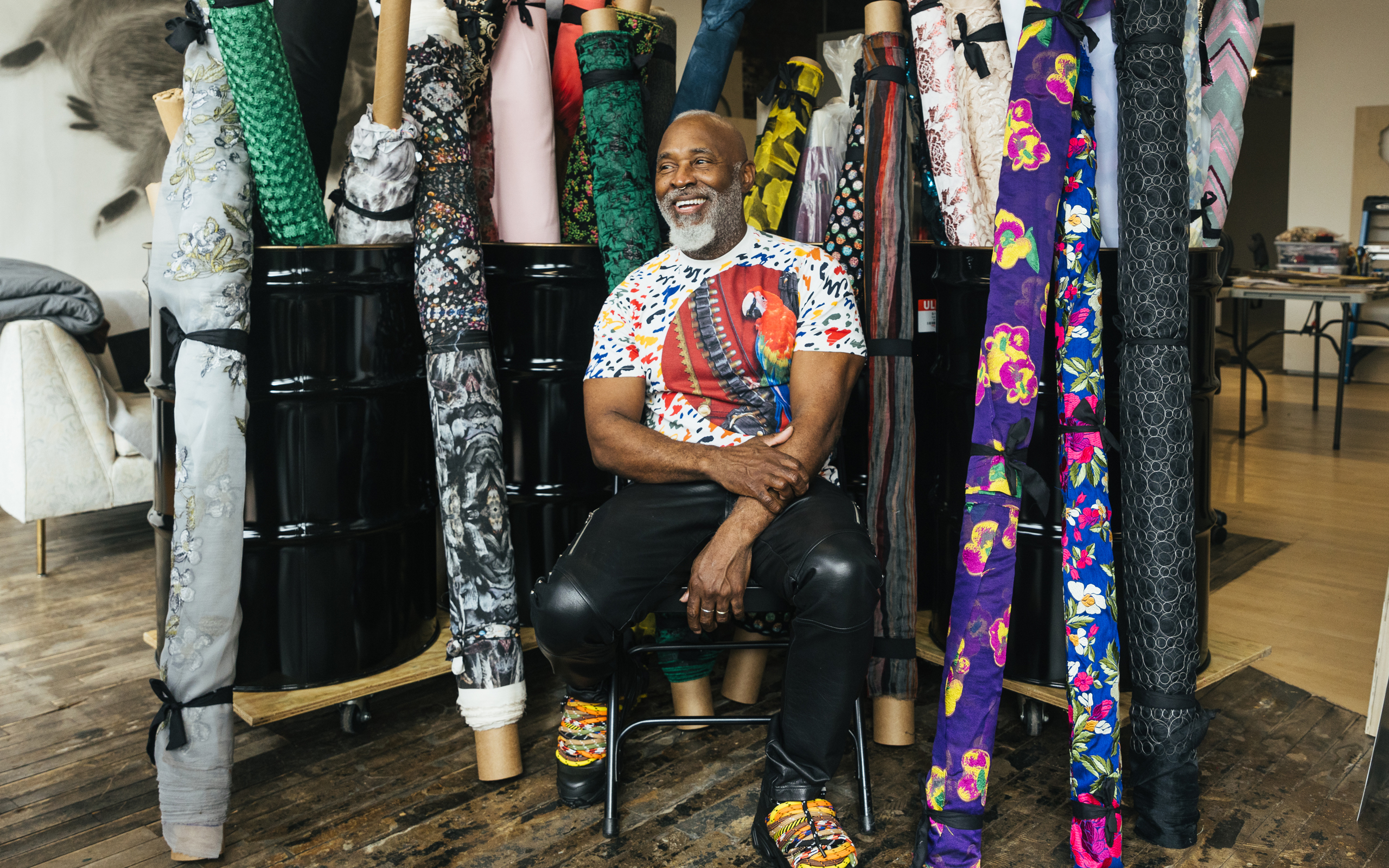
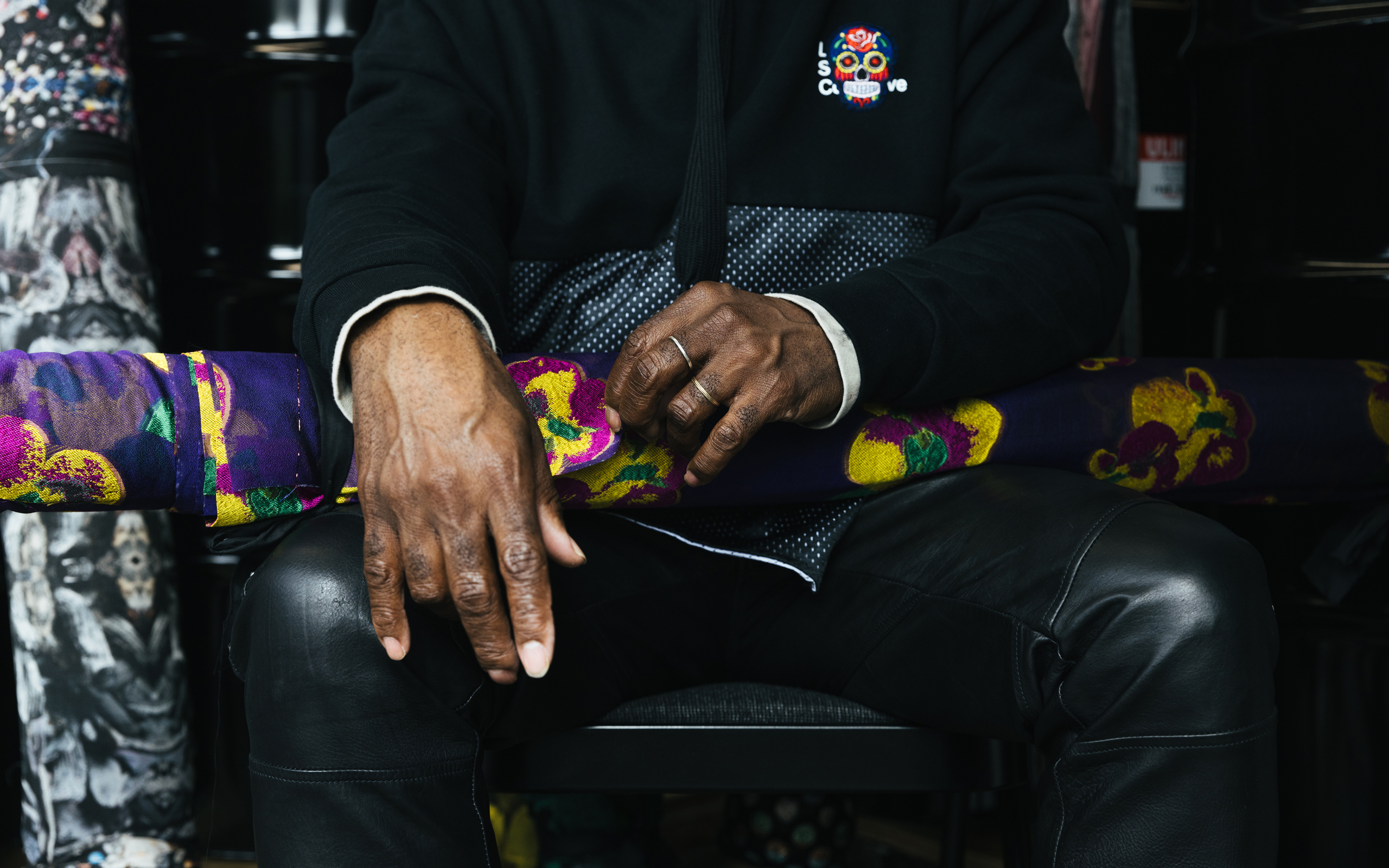
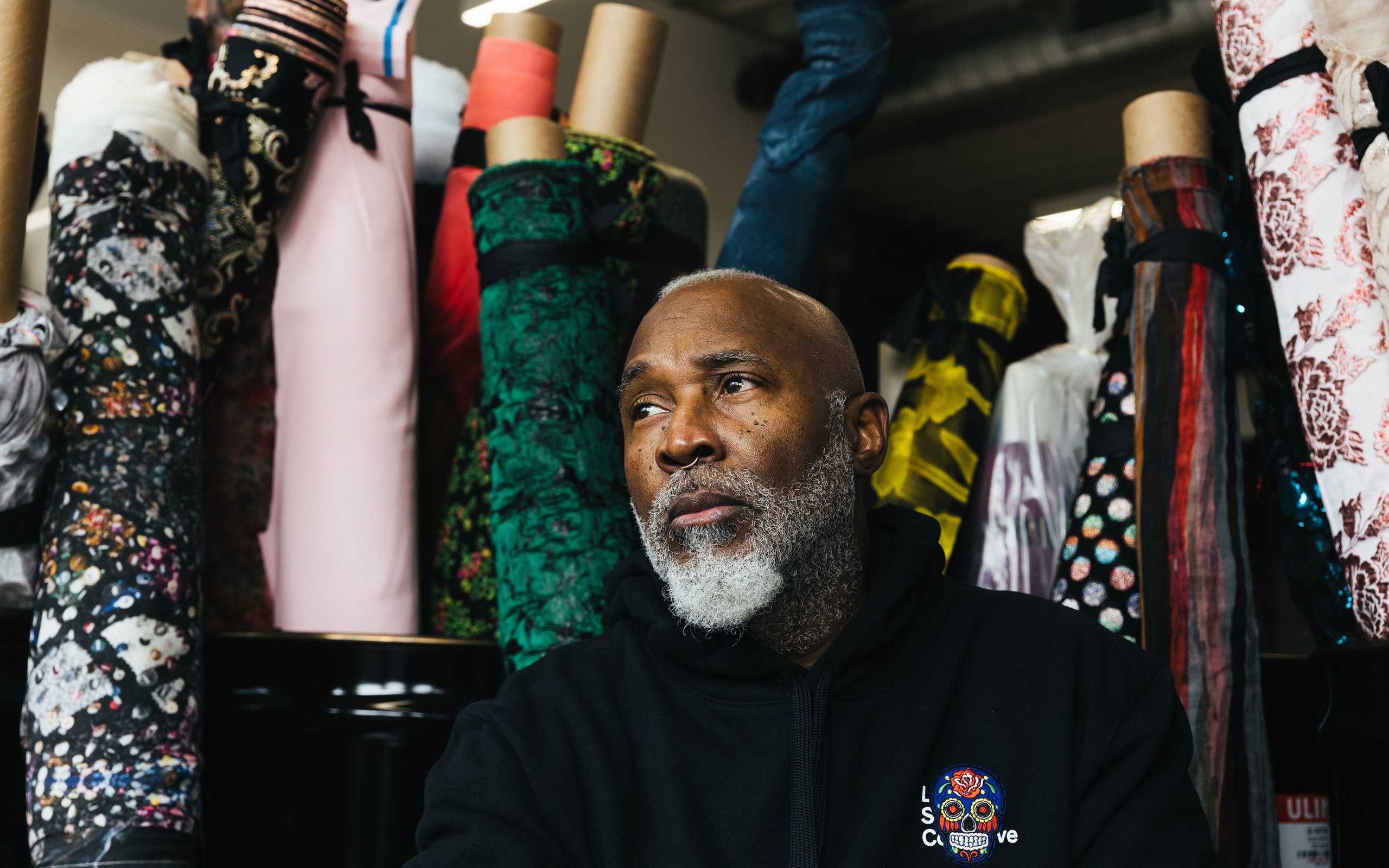
How do you then see the potential incompatibility between enjoying art individually or, let’s say, by a guided interpretation?
There’s always text to support the exhibitions. My preference would be never to talk to anyone. Because it’s all subjective and I think that, you know, I’m more curious about what you are responding to and what you are questioning and what you think you see. If it’s going to be a sort of exchange, then that’s something that I’m open to, but I don’t want to be pouring out my soul to tell you what the work is about, because I’m just sort of providing another reflection of what’s going on in the world.
How does an exhibition come together for you?
As artists we have the studio practice, but it doesn’t end there. Whenever my art comes out of the studio and moves into public space, I’m asking myself what does that mean? When I’m engaging with space, I’m designing another aspect of the practice. To me it’s choreography of how a show is set up and how the audience is structured to move through.
Speaking of spaces: Each One, Every One, Equal All (2022) is a two-dimensional adaptation of Soundsuits. For this piece, the textures and colors of the dresses play on nothing less than the walls of the Times Square subway corridor in New York.
Let me tell you: EPIC. You know, I wasn’t sure about it... not that I wasn’t curious, but I was questioning the translation: Is it going to feel that it's moving, is it going to look like hair? But I’m telling you, it is [whispers]: Fabulous.
Congratulations! It will stay there forever!
Forever! And so, you know, these moments of permanency are interesting to me. I wrote in my journal, probably 40 years ago that I’m “working toward what I’m leaving behind”. At the time, I didn’t know what that meant, until I was in the subway. There I was like Oh... Here it is!
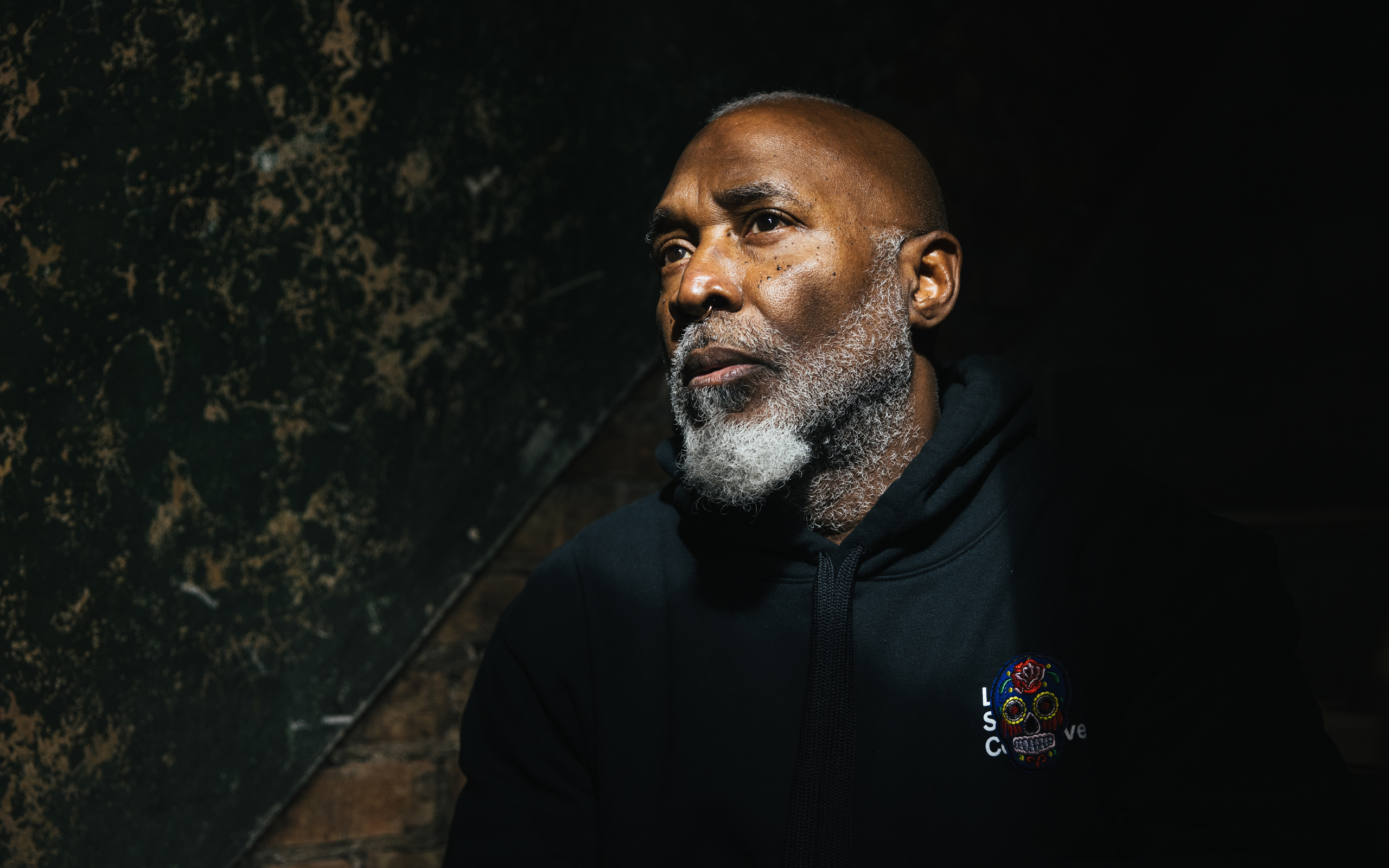
You vision a more just future through art, music, fashion and performance. Do you have some contemporary art, pop culture or anything else for that matter that speaks to you and has a similar vision?
You know, when I was 17 and went to the Saint Louis Art Museum for the first time. I had never been to a museum before and saw an Anselm Kiefer painting. I don’t know why, but I started crying. That moment made me realize how art can move me emotionally. Kiefer’s work has always been so much about humanity. Then we could go into Rihanna’s Super Bowl presentation and talk about this sort of elevation they used to create space and to put her in position of being above it all. Or then I can talk about Beyoncé’s Renaissance which is grounded in Black queer f-ing BALLS and just to be celebrated in that sort of capacity. Or I could go to Shirley Horn’s Here’s to life, that I have listened to every day for decades. That’s what calms me down on a daily basis.
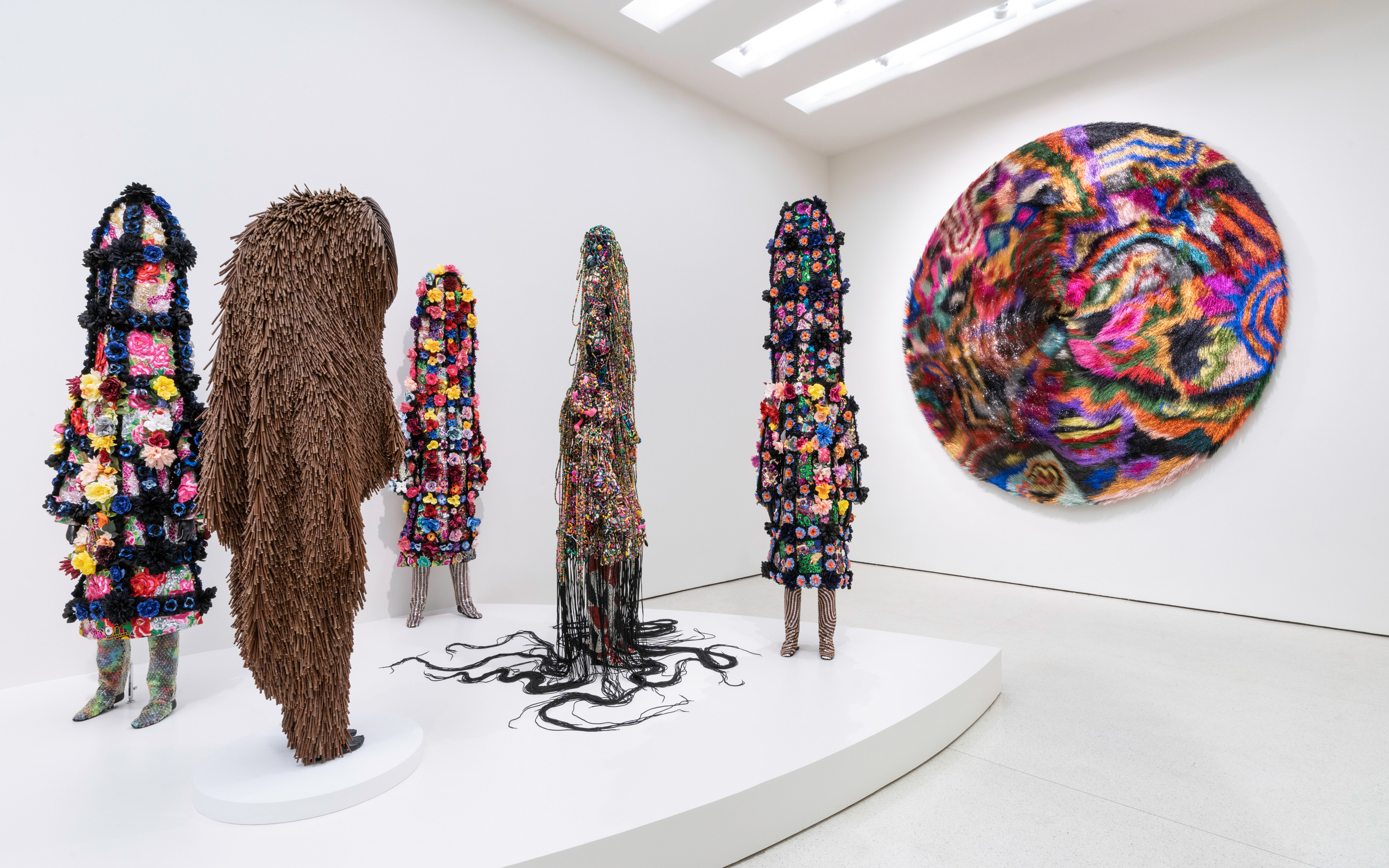
Installation view, Nick Cave: Forothermore, Solomon R. Guggenheim Museum, November 18, 2022-April 10, 2023. Photo: Ariel lone Williams. © Solomon, R. Guggenheim Foundation, New York
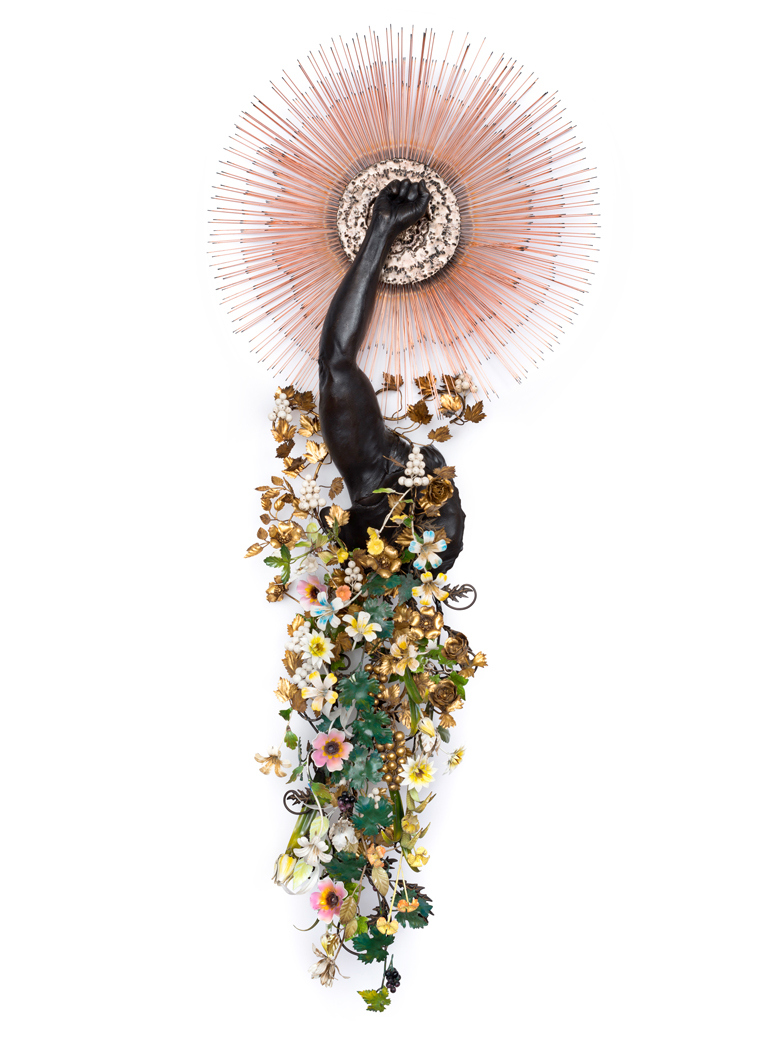
Nick Cave, Arm Peace, 2018
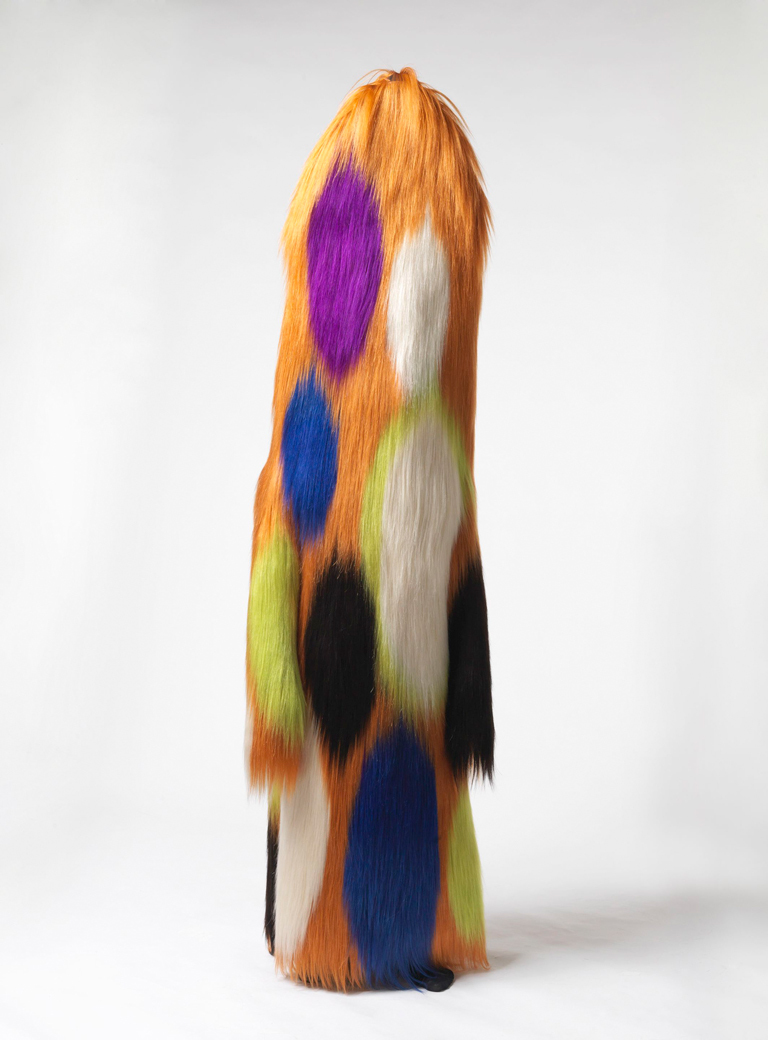
Nick Cave, Soundsuit, 2009
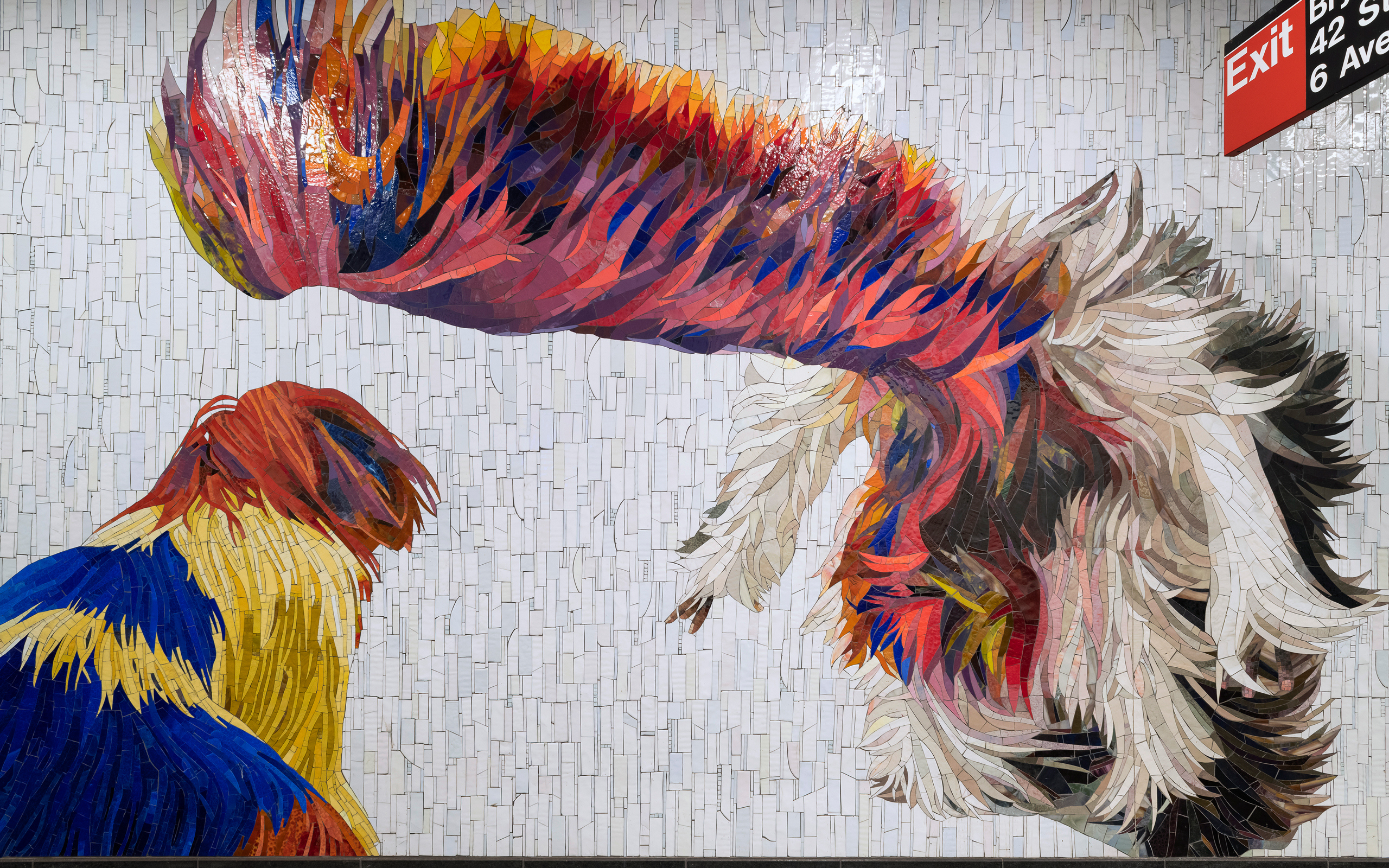
Each One, Every One, Equal All, NYC Transit Times Sq-42 St Station, Commissioned by MTA Arts & Design, Photo by James Prinz. Courtesy of the artist and Jack Shainman Gallery
Interview: Rasmus Kyllönen
Photos: David Johnson


